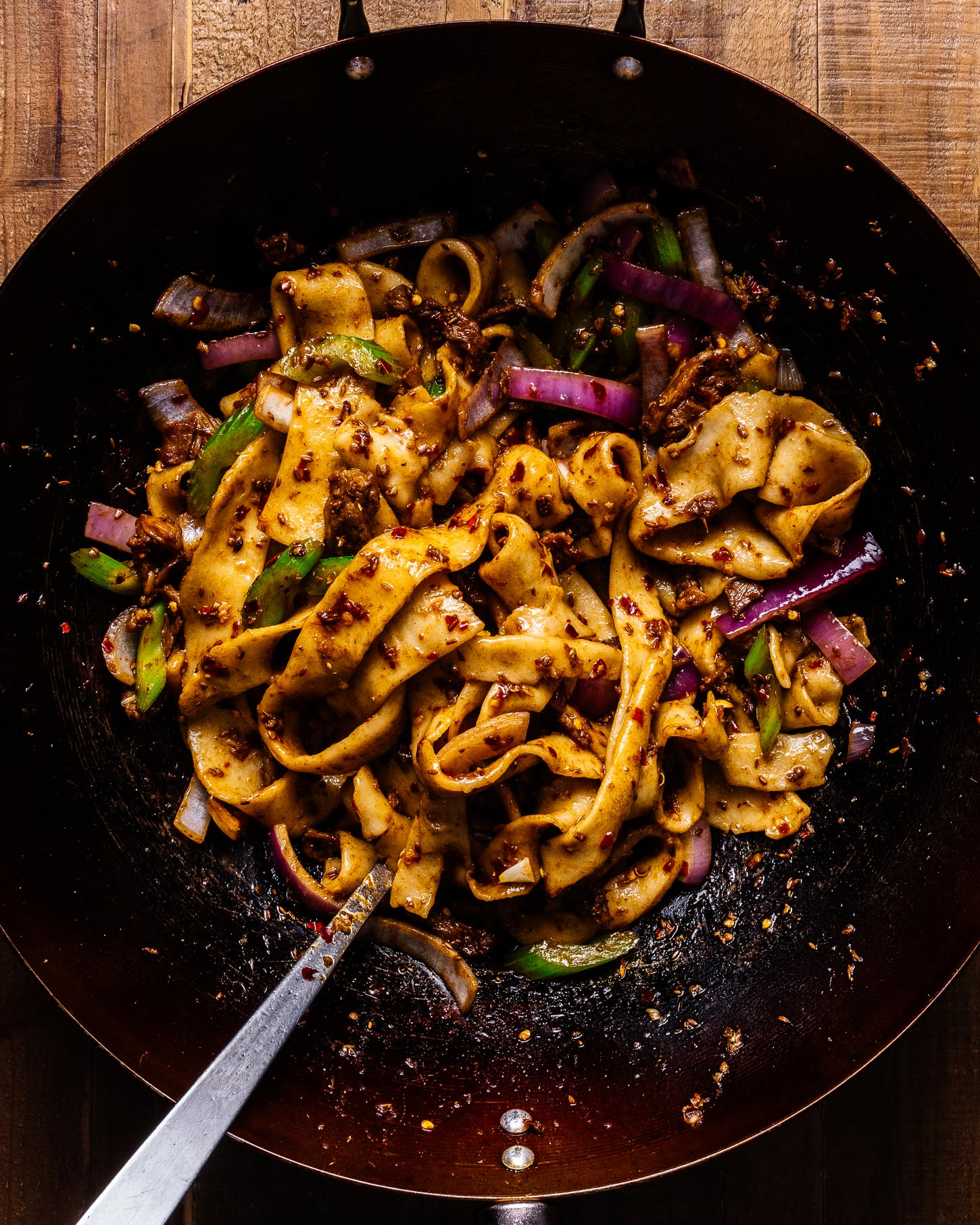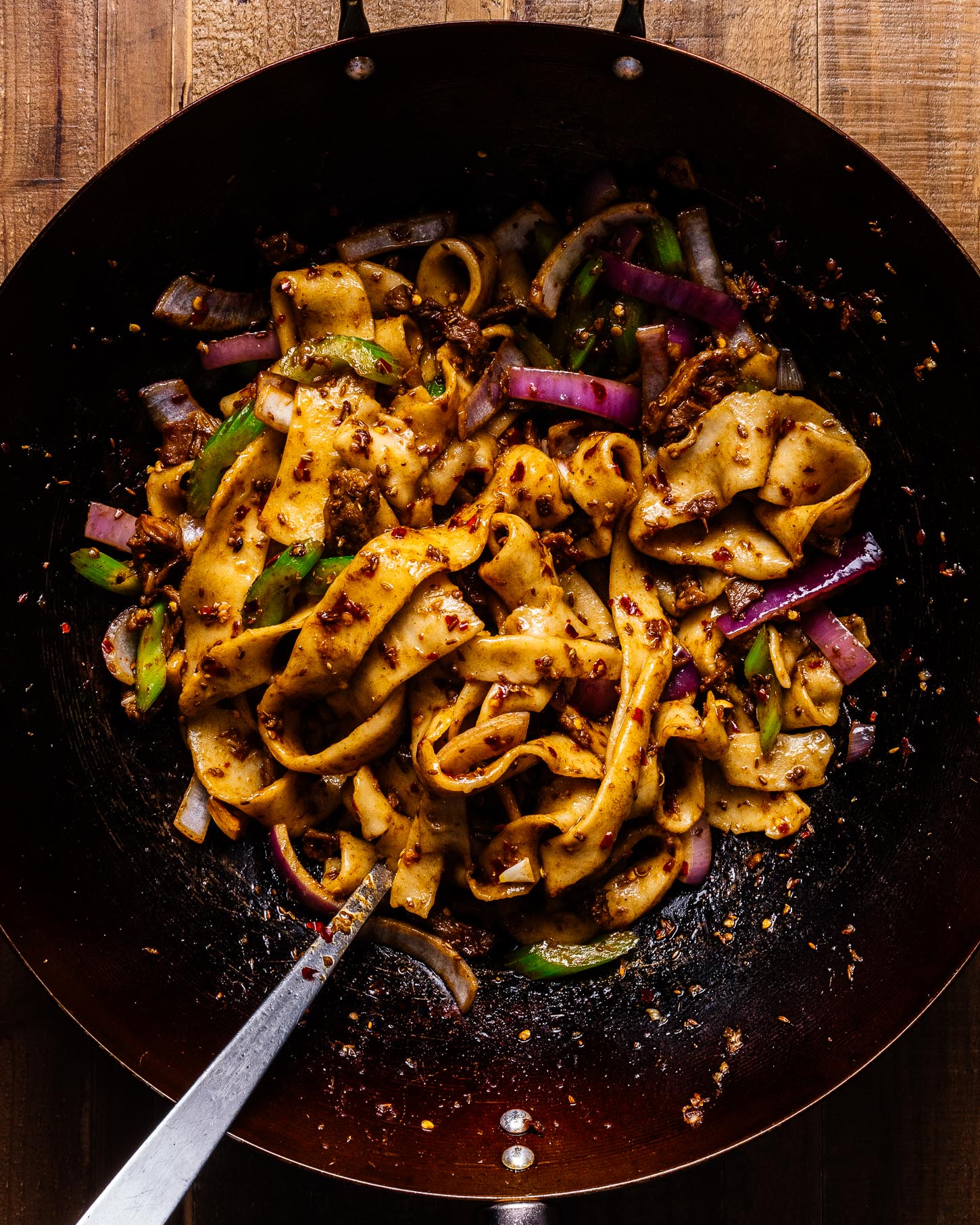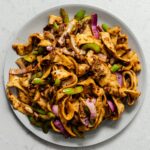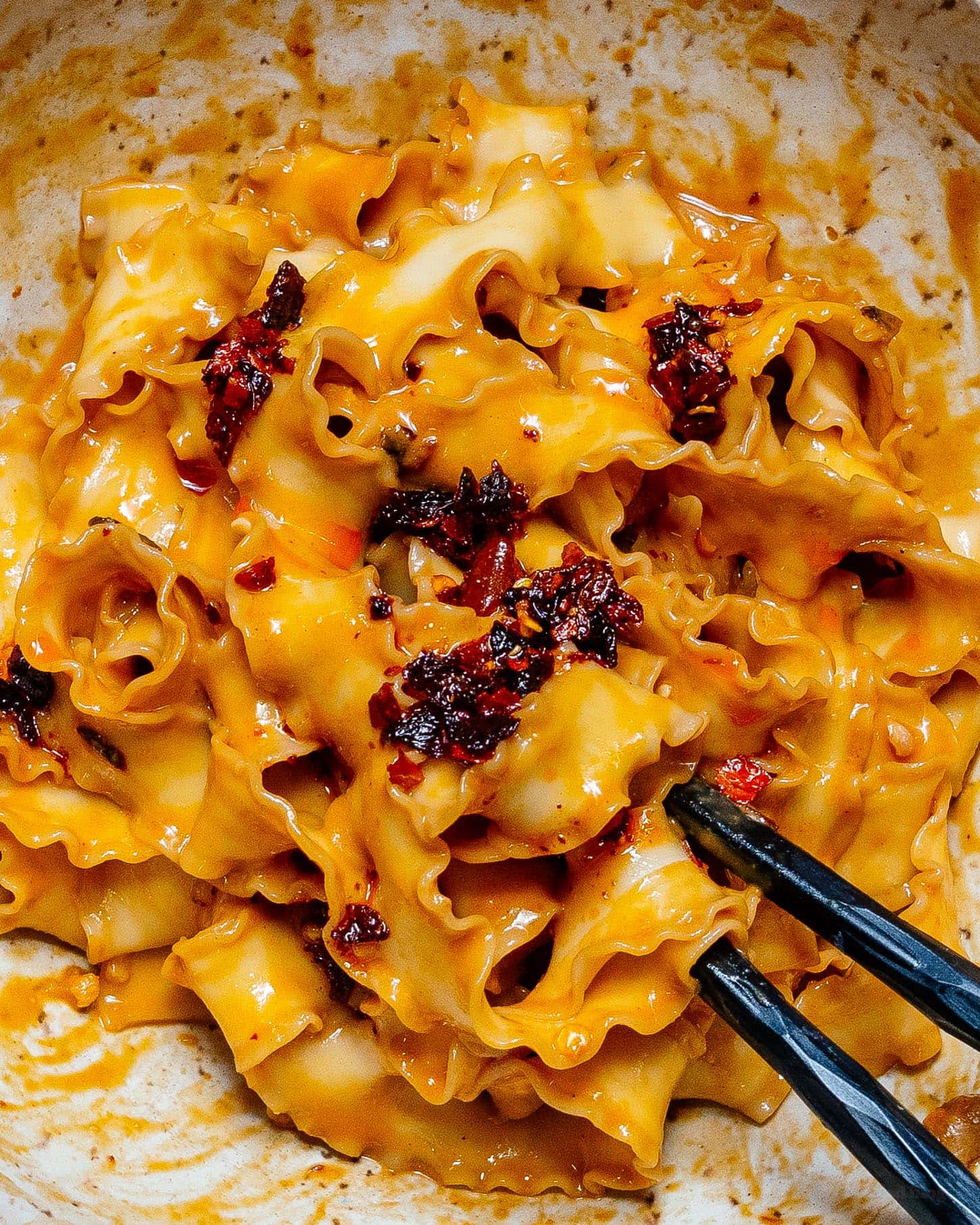
If you’ve eaten at Xi’an Famous Foods in New York, you know what biang biang noodles are: handmade thick, wide, chewy noodle goodness.
Biang Biang Noodles
The actual birthplace of biang biang noodles is in central China, in Shaanxi province. They used to be more of a peasant-type noodle, but now they’re pretty much ubiquitous in Shaanxi and especially in Xi’an, the capital. There are a bunch of theories on the name—that it comes from the sound the noodles make when you bang them on the table or the sound that people make when they eat the noodles—and even more theories on why the Chinese character for biang is so complex (it’s made up of 58 strokes).
But really, all you need to know about biang biang noodles is that they’re good. They’re hearty and hold up well when fried, tossed, and added to soups. We even like to go a little crazy and use them where you’d typically use pasta.

This is an excerpt from our upcoming book That Noodle Life, launching April 12, 2022 wherever fine books are sold. If you preorder before launch and register here, you can get this awesome NOODLES NOODLES NOODLES tote:



Biang Biang Noodles
#wprm-recipe-user-rating-0 .wprm-rating-star.wprm-rating-star-full svg * { fill: #f5a623; }#wprm-recipe-user-rating-0 .wprm-rating-star.wprm-rating-star-33 svg * { fill: url(#wprm-recipe-user-rating-0-33); }#wprm-recipe-user-rating-0 .wprm-rating-star.wprm-rating-star-50 svg * { fill: url(#wprm-recipe-user-rating-0-50); }#wprm-recipe-user-rating-0 .wprm-rating-star.wprm-rating-star-66 svg * { fill: url(#wprm-recipe-user-rating-0-66); }linearGradient#wprm-recipe-user-rating-0-33 stop { stop-color: #f5a623; }linearGradient#wprm-recipe-user-rating-0-50 stop { stop-color: #f5a623; }linearGradient#wprm-recipe-user-rating-0-66 stop { stop-color: #f5a623; }
Ingredients
- 10 oz all purpose flour about 2⅓ cups
- 1/4 tsp salt
- neutral oil as needed
Instructions
-
Use a pair of chopsticks to stir together the flour and salt in a large bowl. Slowly add ½ cup of water, stirring until the mixture comes together into a shaggy dough. Turn the dough out onto a clean work surface and knead until the dough is smooth, elastic, and not at all sticky, about 20 minutes. If the dough is too dry, add water, a teaspoon at a time. Alternatively, you can use a dough hook and a stand mixer on low speed.
-
Form the dough into a ball and wrap it in lightly oiled plastic wrap. Let it rest at room temperature for at least 2 hours and up to 24 hours. (It’s best if you can make this the day before and let it rest overnight—the dough will have lots of hands-off time to develop gluten, making the noodles thick and chewy.)
-
When you’re ready to pull the noodles, lightly oil the dough and divide it into halves. Cover one portion with plastic wrap while you work with the other one. Lightly oil your work surface and a tray. Place the dough on the work surface and roll it into a rectangle about ¼ inch thick. Use a knife to cut it into 1-inch-wide strips. Cover the strips with plastic wrap.
-
Working with one dough strip at a time, use the heel of your hand to flatten it into a very wide, long strip, then take hold of both ends of the strip and bang it against the oiled work surface, pulling your hands apart slowly so that you’re stretching the dough. There’s no trick to pulling the noodles—as long as your dough has rested enough and you slowly stretch out your hands, the dough will comply. Pull until the noodle is 20 to 24 inches long and about ⅛ inch thick. Lay the noodle on your prepared tray (you may need to snake the noodle to fit) and cover with plastic wrap so it doesn’t dry out. Repeat with the remaining dough until it is used up.
-
Bring a large pot of water to a boil over high heat. Add the noodles and stir gently so they don’t stick to each other or the bottom of the pot. Cook until tender, chewy, and cooked through, 4 to 5 minutes. Drain well.
-
To serve, toss the noodles with the sauce of your choice, and enjoy.
Notes
If you want to skip the hand-pulling, you can just roll out the dough to your desired thickness and cut it into your desired noodle width with a sharp knife.
Estimated Nutrition
Calories from Fat 18


